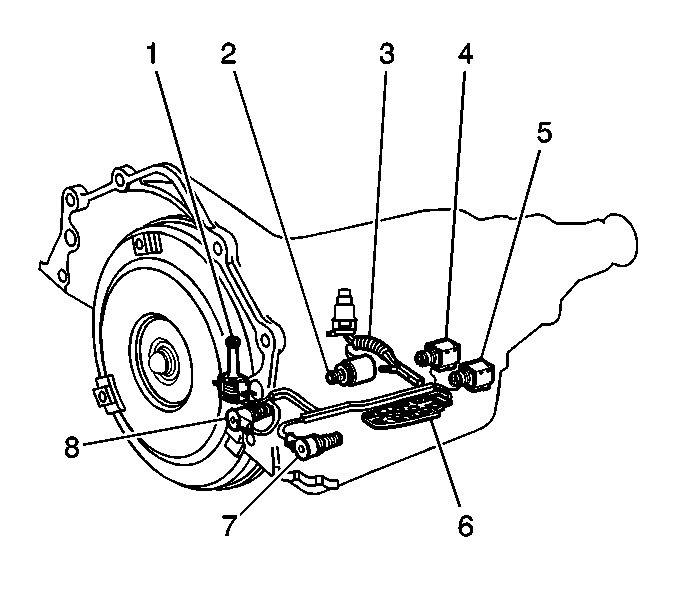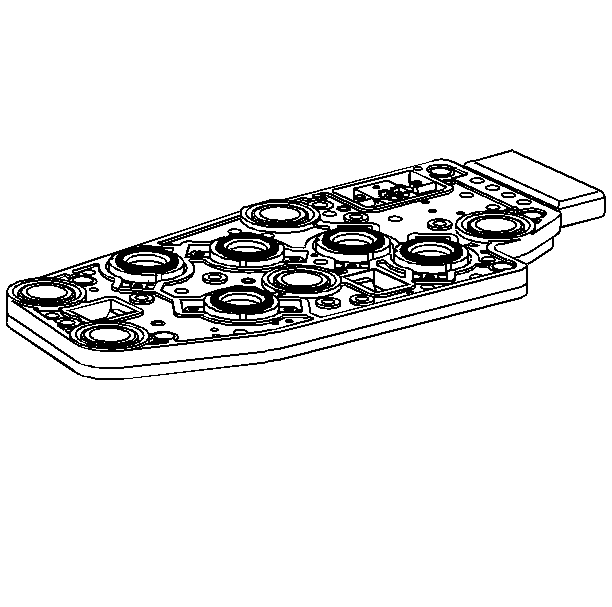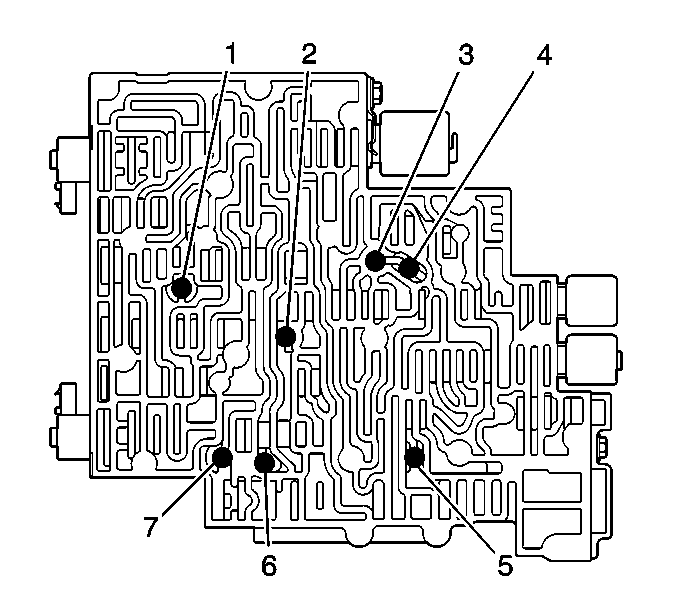
- Install the checkballs (1-7) in the valve body.
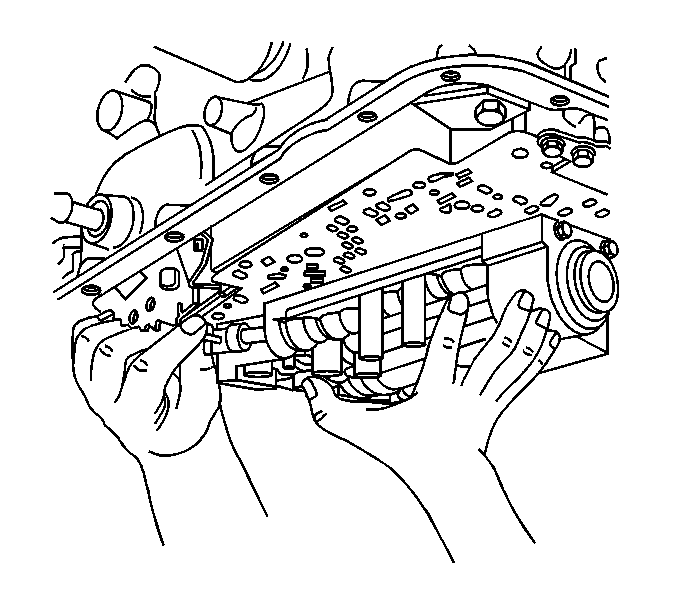
- Install the control valve body to the transmission case while simultaneously connecting the manual valve link to the manual valve.
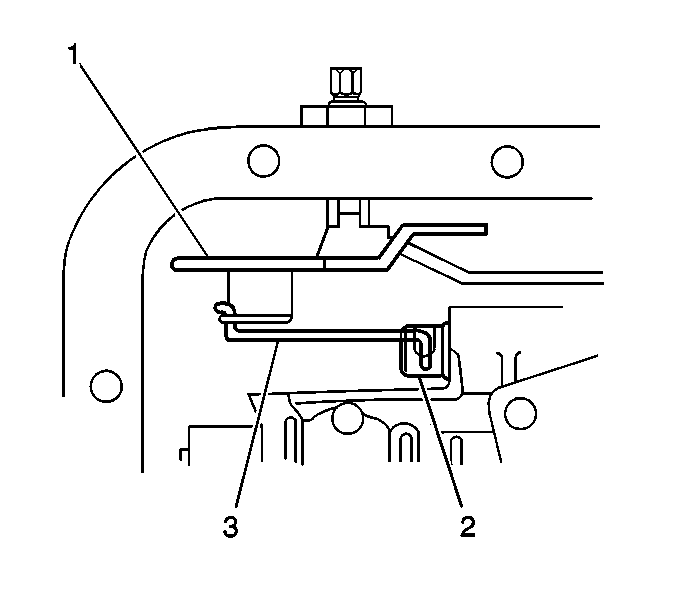
- Verify that the manual valve link (3) is installed properly to the inside detent lever (1) and the manual valve (2).
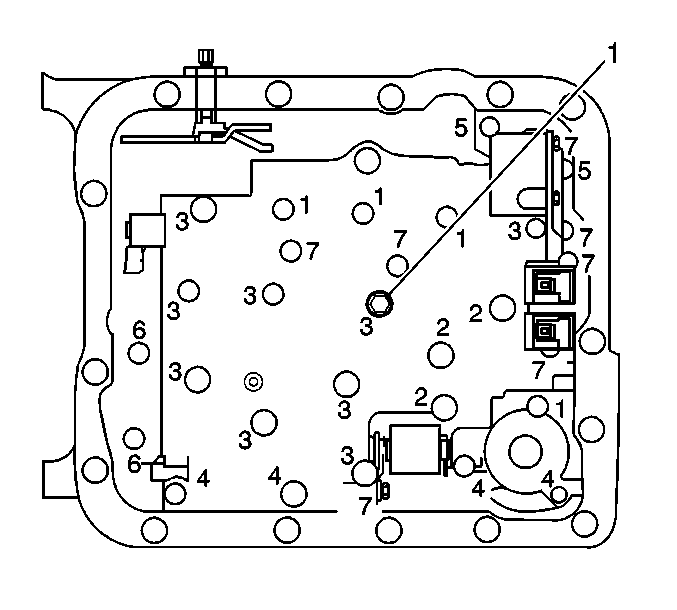
- Install one bolt (M6 X 1.0 X 47.5) hand tight in the center (1) of the valve body to hold it in place.
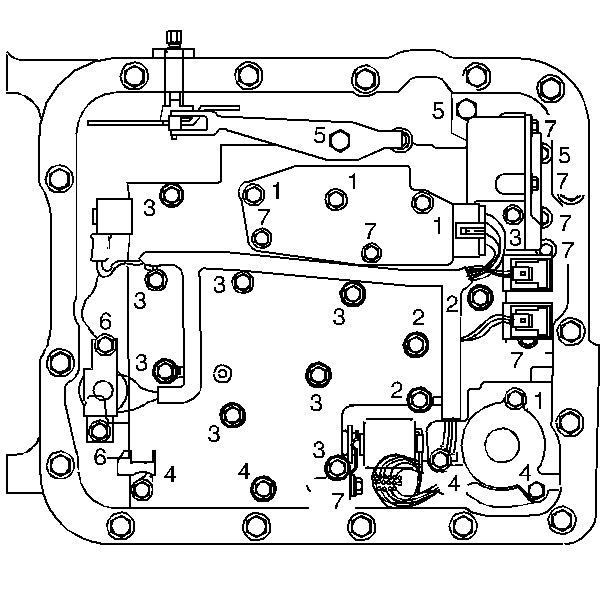
Important: When installing bolts throughout this procedure, be sure to use the correct bolt size and length in the correct location as specified.
- Do not install the transmission fluid indicator stop bracket and bolt at this time.
Install but do not tighten the control valve body bolts which retain only the valve body directly.
Each numbered bolt location corresponds to a specific bolt size and length, as indicated by the following:
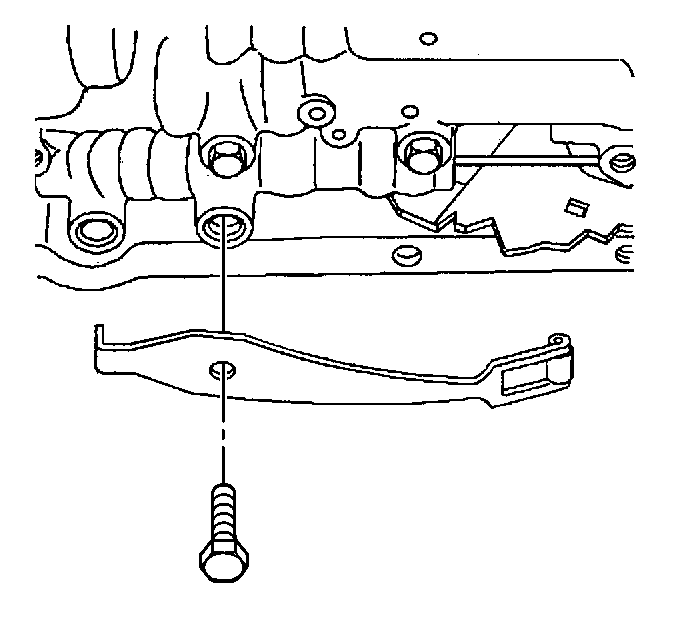
- Install the manual detent spring.
- Install but do not tighten the manual detent spring retaining bolt.
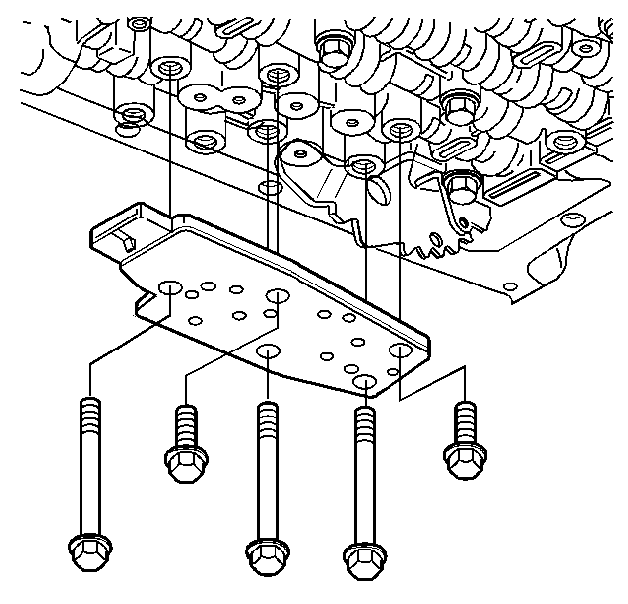
- Install the transmission fluid pressure switch.
- Install but do not tighten the control valve body bolts which retain the transmission fluid pressure switch to the control valve body.
Notice: Use the correct fastener in the correct location. Replacement fasteners
must be the correct part number for that application. Fasteners requiring
replacement or fasteners requiring the use of thread locking compound or sealant
are identified in the service procedure. Do not use paints, lubricants, or
corrosion inhibitors on fasteners or fastener joint surfaces unless specified.
These coatings affect fastener torque and joint clamping force and may damage
the fastener. Use the correct tightening sequence and specifications when
installing fasteners in order to avoid damage to parts and systems.
Notice: Torque valve body bolts in a spiral pattern starting from the center.
If the bolts are torqued at random, valve bores may be distorted and inhibit
valve operation.
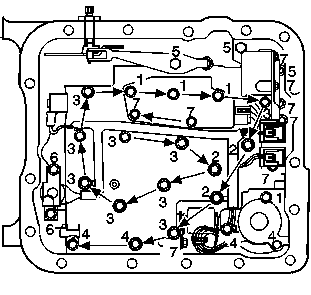
- Tighten the control valve body bolts in a spiral pattern starting from the center, as indicated by the arrows.
Tighten
Tighten the control valve body bolts (in sequence) to 11 N·m (97 lb in).

- Ensure that the manual detent spring is aligned properly with the detent lever.
Tighten
Tighten the manual detent spring bolt to 11 N·m (97 lb in).
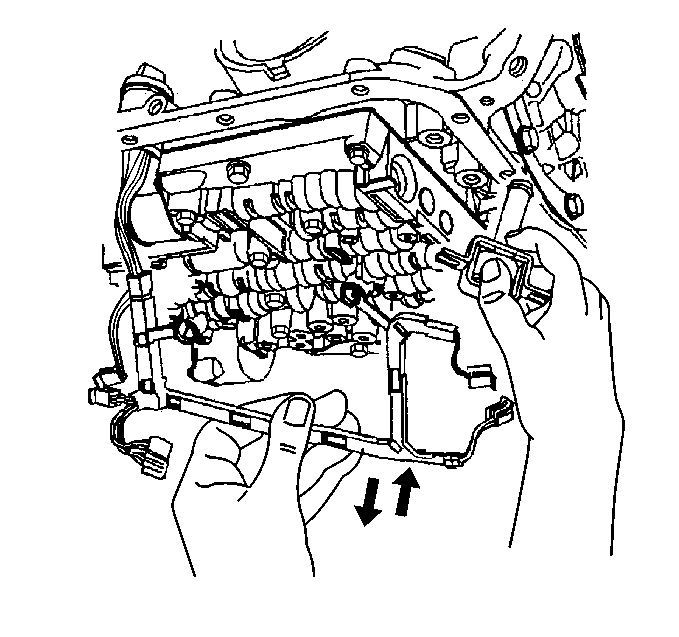
- Install the TCC solenoid with a new O-ring seal to the valve body.

- Install the TCC solenoid bolts.
Tighten
Tighten the TCC solenoid retaining bolts to 11 N·m (97 lb in).
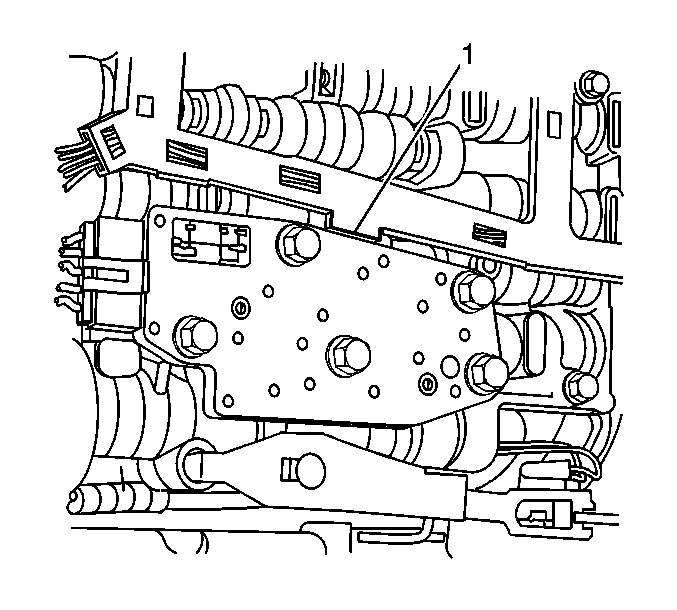
- Install the internal wiring harness to the valve body. The internal wiring harness has a tab (1) on the edge of the conduit.
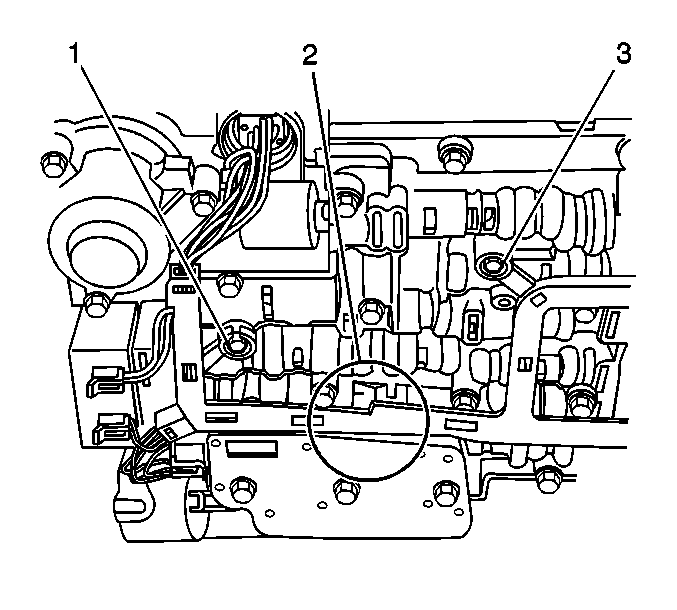
- Place the tab between the valve body and the pressure switch in the location shown (2). Press the harness into position on the valve body bolt bosses
(1, 3).
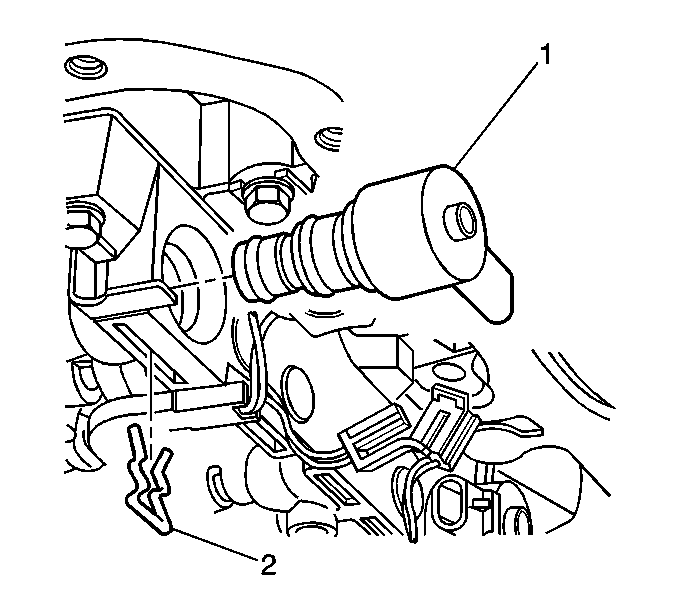
- Install the TCC PWM solenoid (1) to the control valve body.
- Install the TCC PWM solenoid retainer (2).
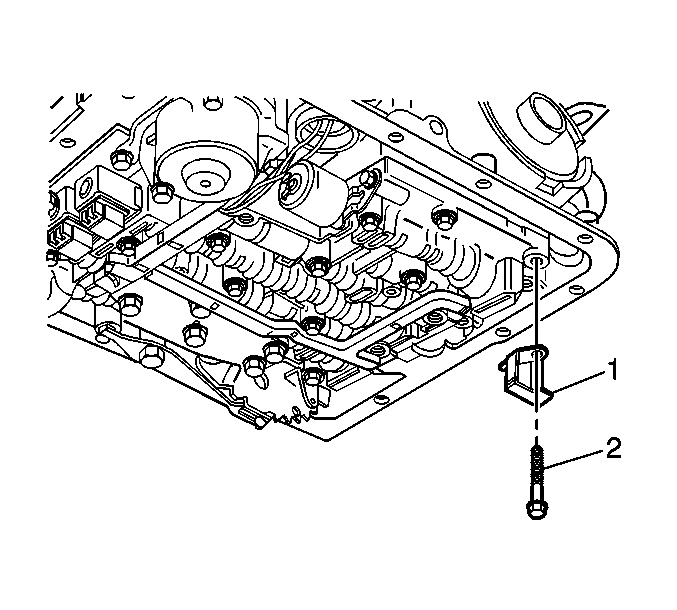
- Install the transmission fluid indicator stop bracket (1) and bolt (2).
Tighten
Tighten the transmission fluid indicator stop bracket bolt to 11 N·m (97 lb in).
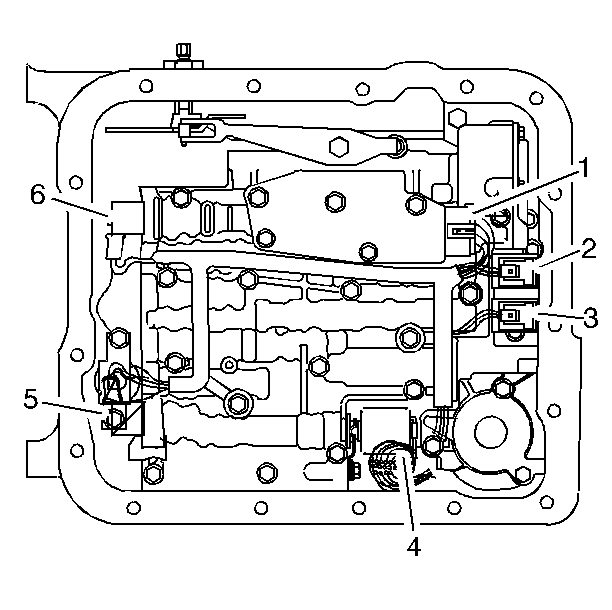
- Connect the internal wiring harness electrical connectors to the following components:
| • | The transmission fluid pressure manual valve position switch (1) |
| • | The 1-2 shift solenoid (2) |
| • | The 2-3 shift solenoid (3) |
| • | The pressure control solenoid (4) |
| • | The TCC PWM solenoid (5) |
| • | The 3-2 shift solenoid (6) |
- Install the transmission oil pan and filter. Refer to
Automatic Transmission Fluid and Filter Replacement
.
- Lower the vehicle.
- Fill the transmission to the proper level with DEXRON® VI transmission fluid. Refer to
Transmission Fluid Check
.
Important: It is recommended that transmission adaptive pressure (TAP) information be reset.
Resetting the TAP values using a scan tool will erase all learned values in all cells. As a result, The ECM, PCM or TCM will
need to relearn TAP values. Transmission performance may be affected as new TAP values are learned.
- Reset the TAP values. Refer to
Transmission Adaptive Functions
.
